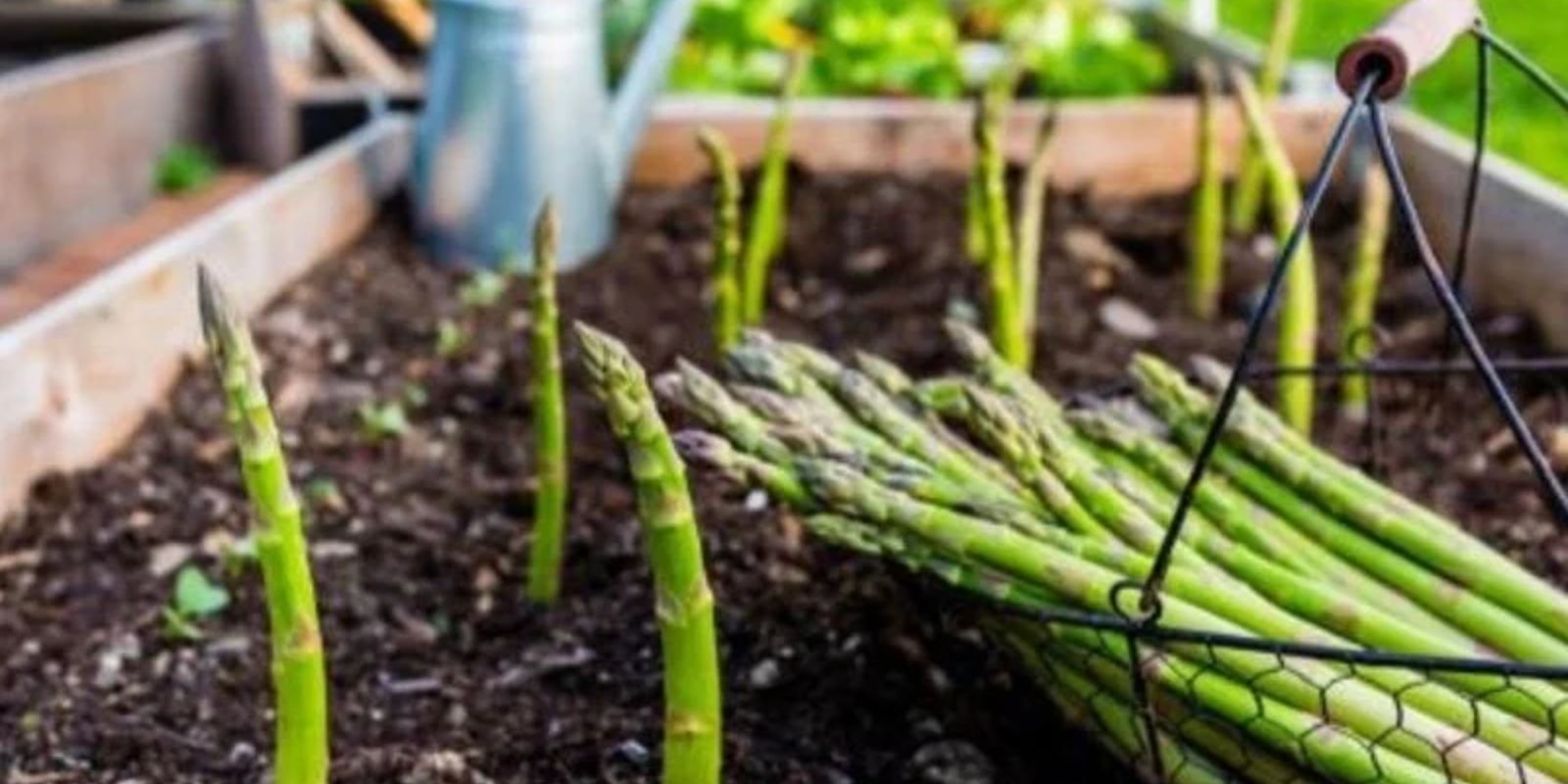Asparagus is a perennial vegetable known for its delicious taste and numerous health benefits. Growing asparagus at home, especially in containers, allows you to enjoy fresh spears without needing a large garden space. This guide will take you through the steps to successfully cultivate asparagus in containers, ensuring you have a bountiful harvest for years to come.
1. Choosing the Right Container
To start your asparagus garden, select a suitable container:
- Size: Choose a deep container at least 12-18 inches tall, as asparagus has deep root systems. A width of 18-24 inches is ideal.
- Material: Consider materials like plastic, wood, or ceramic, ensuring they have good drainage holes.
- Mobility: If you live in an area with varying weather, opt for a container that you can move to provide optimal sun exposure and protection from harsh conditions.
2. Selecting the Right Soil
Asparagus thrives in well-draining, nutrient-rich soil:
- Potting Mix: Use a high-quality potting mix designed for vegetables. This ensures proper drainage while retaining essential moisture.
- Amendments: You can add compost or aged manure to enhance soil fertility, as asparagus benefits from nutrient-rich environments.
3. Choosing Asparagus Crowns
Select healthy asparagus crowns for planting:
- Age: Look for 1- or 2-year-old crowns, as these will establish more quickly and produce better yields.
- Varieties: Choose varieties suited to your climate, such as ‘Jersey Knight’ or ‘Mary Washington,’ which are well-known for container growth.
4. Planting the Crowns
Once you have your container, soil, and crowns ready, follow these planting steps:
- Preparation: Moisten the potting mix slightly before planting to make it easier to work with.
- Planting: Dig a hole about 2-4 inches deep for each crown. Space the crowns 6-12 inches apart to allow for their growth.
- Covering: Place the crowns in the holes with the buds facing upward and gently cover them with soil.
5. Watering
Proper watering is crucial for establishing healthy asparagus:
- Initial Watering: After planting, water the crowns lightly to settle the soil around them.
- Ongoing Care: Keep the soil consistently moist, especially during the growing season. Avoid overwatering, which can lead to root rot.
6. Providing Adequate Sunlight
Asparagus loves sunlight:
- Sun Exposure: Place your container in a location where it receives at least 6-8 hours of direct sunlight daily.
- Rotation: If possible, rotate the container occasionally to ensure even growth and sunlight exposure on all sides.
7. Fertilizing Regularly
To support healthy growth, fertilize your asparagus:
- Timing: Use a balanced, slow-release fertilizer in early spring when new growth begins.
- Application: Follow the package instructions for application rates, usually every 4-6 weeks during the growing season.
8. Managing Weeds and Pests
Keep your container asparagus healthy by managing weeds and pests:
- Weeding: Regularly check for weeds that can compete for nutrients. Remove them by hand to avoid disturbing the asparagus roots.
- Pest Control: Monitor for pests like aphids or spider mites. You can use insecticidal soap or neem oil to manage infestations naturally.
9. Harvesting Asparagus
Patience is key when growing asparagus:
- Initial Growth: Allow the asparagus to grow undisturbed for at least two years after planting. This helps establish a strong root system.
- Harvesting: In the third year, you can begin to harvest spears. Cut them at ground level when they are about 6-8 inches tall. Leave some to grow into ferns, which will help nourish the roots for future growth.
10. Winter Care
Asparagus is a hardy perennial, but it needs protection during winter:
- Fallen Leaves: After the growing season, cut back dead ferns and add a layer of mulch to protect the roots during the winter months.
- Container Protection: If you live in a colder climate, consider moving the container to a sheltered location or wrapping it with insulating materials.
11. Enjoying Your Harvest
Once established, your container-grown asparagus can produce for 15 years or more!
- Fresh Uses: Enjoy asparagus fresh in salads, steamed, roasted, or grilled. Its unique flavor enhances various dishes, making it a favorite in many cuisines.
Conclusion
Growing asparagus in containers is a fantastic way to enjoy this nutritious vegetable even in limited space. With the right care and patience, you can cultivate healthy, productive plants that will reward you with delicious spears year after year. So gather your supplies and start your asparagus journey today!
Engage with Us!
Have you tried growing asparagus at home? Share your experiences or tips in the comments below!

